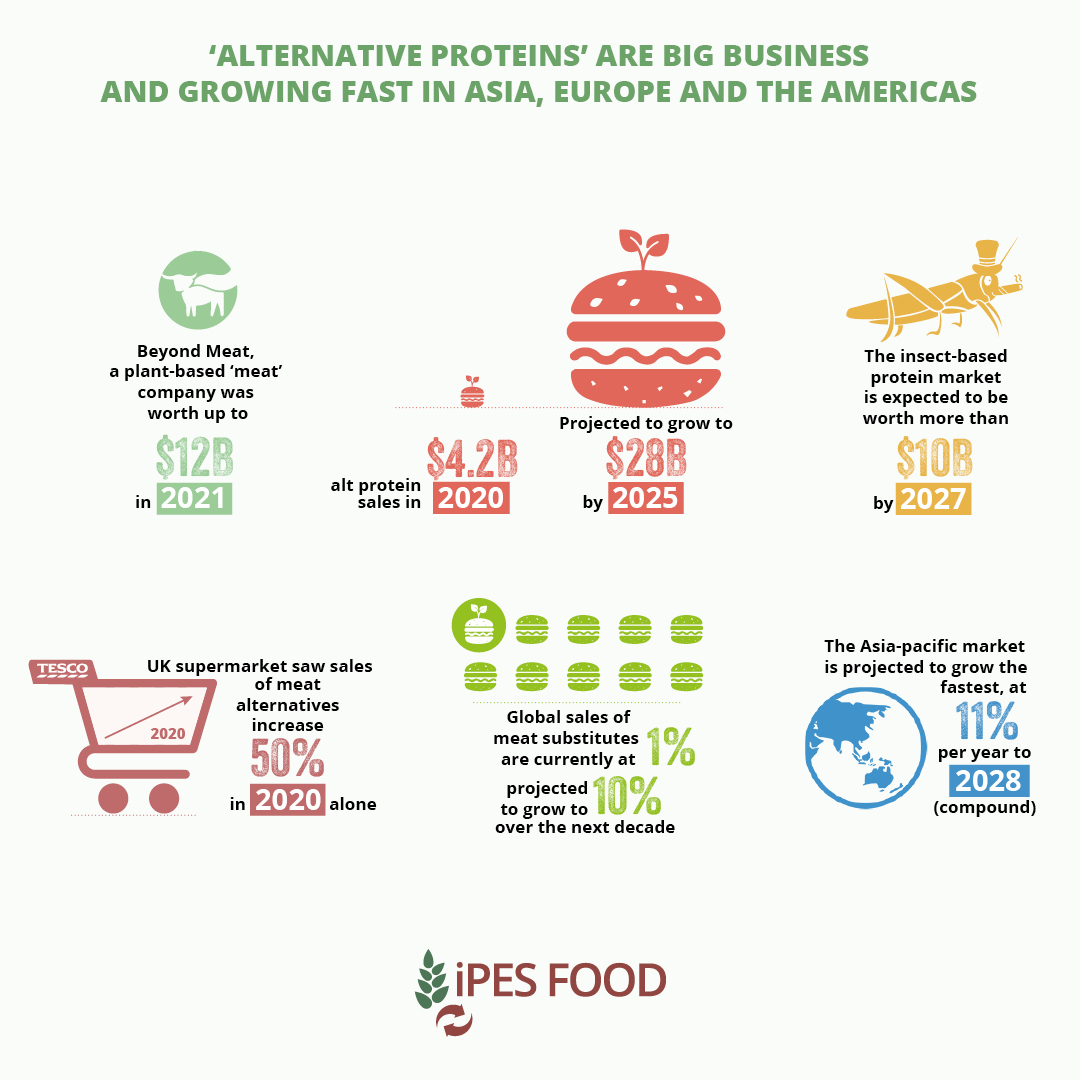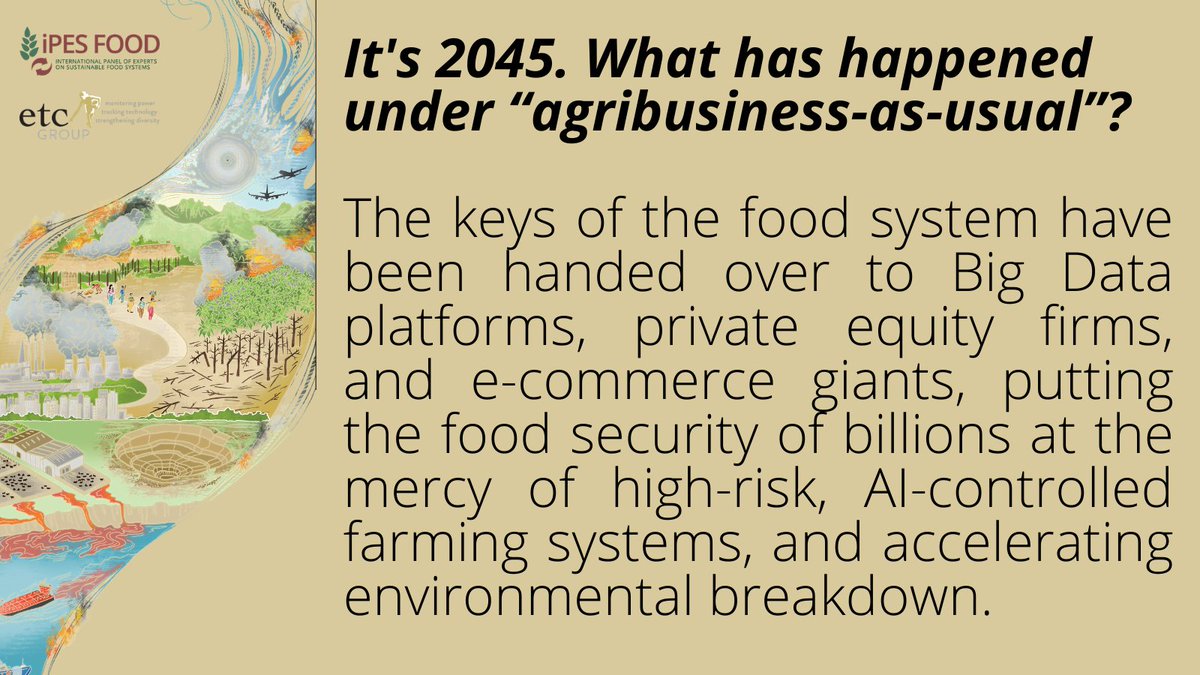In IPES-Food's latest report, 'The Added Value(s) of #Agroecology', we focused on a series of obstacles that prevent the transition to agroecological #foodsystems.
🌱 One such obstacle is the *access to #seeds & #organic inputs*. Here's a quick thread on why this matters! 👇🏿
/1
🌱 One such obstacle is the *access to #seeds & #organic inputs*. Here's a quick thread on why this matters! 👇🏿
/1

#Farmer seed systems - through which farmers select, multiply, conserve & exchange a wide range of reproducible varieties - are an essential component of #agroecology, which relies on diversity at all levels (including crop genetic diversity). 🌱🌿🌾
/2
/2
#DidYouKnow that these systems account for up to 90% of the seeds used in some African countries? And in #Mali, peasant seed systems make up 75% of the varieties grown in the country.
❗️ However, these systems are lacking in legal recognition and policy support ❗️
/3
❗️ However, these systems are lacking in legal recognition and policy support ❗️
/3
Meanwhile donor- & industry-led initiatives to promote hybrid commercial #seeds are gaining ground, despite ample evidence showing their inappropriateness in African contexts & their negative impact on #farmers' autonomy & resilience.
/4
/4
So what does this mean?
#Farmer seed systems are relegated to 'informal' status, & their potential to support diversified agroecological farming is held back. And while farmer #seed systems for #cereal crops are highly developed, access to #vegetable seeds remains low...
/5
#Farmer seed systems are relegated to 'informal' status, & their potential to support diversified agroecological farming is held back. And while farmer #seed systems for #cereal crops are highly developed, access to #vegetable seeds remains low...
/5
So as a result, the risks of genetic uniformity of crops, loss of #biodiversity, and farmer indebtedness are high, and the prospects for #agroecology are severely constrained.
[💡 See page 71 of the report 📃 ipes-food.org/_img/upload/fi…]
/6
[💡 See page 71 of the report 📃 ipes-food.org/_img/upload/fi…]
/6
💬 For Issouf Sanou of FENOP: "In the beginning, people believed that improved #seeds would improve farmers’ living conditions, but we quickly realized that improved seeds had a lifespan. Improved seeds means #pesticides, and #fertilizers. And all this creates dependence.” ❗️
/7
/7

👨🏿🌾 Farmers also face major challenges in accessing #organic matter, as a result of #desertification, #deforestation and encroachment on land and natural woodlands, with #climatechange exacerbating these trends (@FAO & IPTS, 2015).
/8
/8
The majority of #biomass produced on cultivated plots tends to be sold off-farm, limiting the amount of #nutrients returned to the #soil. In the case of #sorghum production, for example, panicles are sold for human consumption & the stems are harvested for animal fodder.
/9
/9
Even when farmers can keep #biomass on-farm, they are still forced to compromise:
💬 "Farmers often say they fully understand the use and importance of #organic matter, but that they don’t use plant residues for #compost because they need it for livestock or fencing."
/10
💬 "Farmers often say they fully understand the use and importance of #organic matter, but that they don’t use plant residues for #compost because they need it for livestock or fencing."
/10
💡 Difficulties in accessing #organic matter hinders the development of agroecological practices (i.e. #composting & #mulching).
💵 Private companies do invest in large-scale biofertilizer & composting plants, but pricing can still limit access to these resources!
/11
💵 Private companies do invest in large-scale biofertilizer & composting plants, but pricing can still limit access to these resources!
/11
There is scant policy support for #organic input provision. Countries do subsidize agricultural inputs, but these schemes tend to focus on synthetic #fertilizer + their effectiveness in addressing 👨🏿🌾👩🏿🌾needs & #foodsystems challenges is widely questioned (@OECD @FAO, 2016).
/12
/12
💡📑 'The Added Value(s) of #Agroecology: Unlocking the potential for transition in West #Africa' is available via the IPES-Food website 👉🏿 ipes-food.org/reports/
🚨 Remember to stay tuned for more threads on @Twitter covering the report highlights!
- @threadreaderapp unroll -
🚨 Remember to stay tuned for more threads on @Twitter covering the report highlights!
- @threadreaderapp unroll -

• • •
Missing some Tweet in this thread? You can try to
force a refresh



















